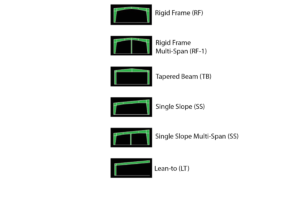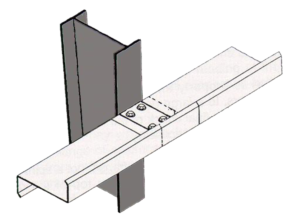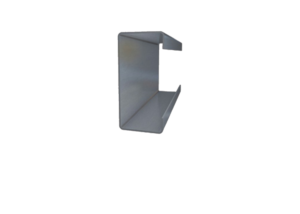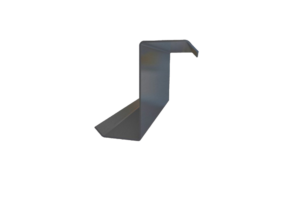Anatomy of a Steel Building: First and Secondary Support Systems.
Anatomy of a Steel Building: First and Secondary Support Systems -Rigid Frames, Purlins & Girts.
Rigid Frame(s)
Rigid frames are the main support system of a prefabricated metal building and is the most crucial component of the anatomy of a steel building. Nothing comes close for both lateral and vertical loads, especially for clear span conditions, then a rigid frame. The base of the rigid frame column is attached to a concrete foundation with anchor bolts.
Let’s look at some of the different types of rigid framing systems and standard frame systems profiles.
Framing Systems: (Figure 1A)
- Rigid Frame (RF)
- Rigid Frame Multi-Spam (RF-1)
- Tapered Beam (TB)
- Single Slope (SS)
- Single Slope Multi-Span (SS)
- Lean-to (LT)
Standard Frame Profiles:
- Rigid Frame (RF)
- Tapered Beam (TB)
- Single Slope (SS)
- Lean-to (LT)
Benefits of using rigid frames:
- Design and size flexibility.
- Efficient design capabilities.
- Economical start-up cost.
- Fast construction.
- Permanence with non-combustible materials.
- Load requirements designed to fit your needs.
Additionally, the strength and durability of using rigid frames in the end walls means you have greater design options. This is optional and might not be standard with most buildings as the end walls are usually constructed with end wall post and beams.
Let’s move on to the secondary support systems of the anatomy of a steel building.
Purlins & Girts:
Purlins
Purlins are horizontal members or “studs” that run down the length of the roof. They attach the main frames, were the roof sheeting is then fastened. The cold rolled form sections are pre-punched to assist with easy erection. The Purlins are coated in hot dip galvanized or gray/red oxide primer.
- Depth Range
- 8, 10, and 12
- Gauge of thinness
- 10-16 gauge
Girts
Like purlins, girts assist in bracing the structure. They run horizontal attaching to the sidewall and/or end-wall columns. Girts can be rolled formed “ZEE” bypass or “ZEE” flush (Figure 1B) and are coated in hot dip galvanized or gray/red oxide primer.
- Depth Range
- 8, 10, and 12
- Gauge of thinness
- 10-16 gauge
- Form Range (Figure 1C)
- “C”
- “Zee”
In short, rigid frames are the main support system of a prefabricated metal building. Purlins and girts assist in bracing the structure and act as an anchor point for roof and wall sheeting to attach. Next week we will describe the difference between Standing Seam and screw down roofing systems.
For more information about the Anatomy of a Steel Building , CLICK HERE or give us a call 888-783-3535
You can also Tweet us @coastalsteel
And, don’t forget to subscribe, share and comment!
Figure 1A

Figure 1B
“Zee” Bypass

“Zee” Flush

Figure 1C
“C” Form

“Zee” Form

Comments
Post a Comment